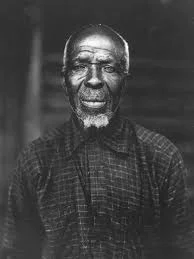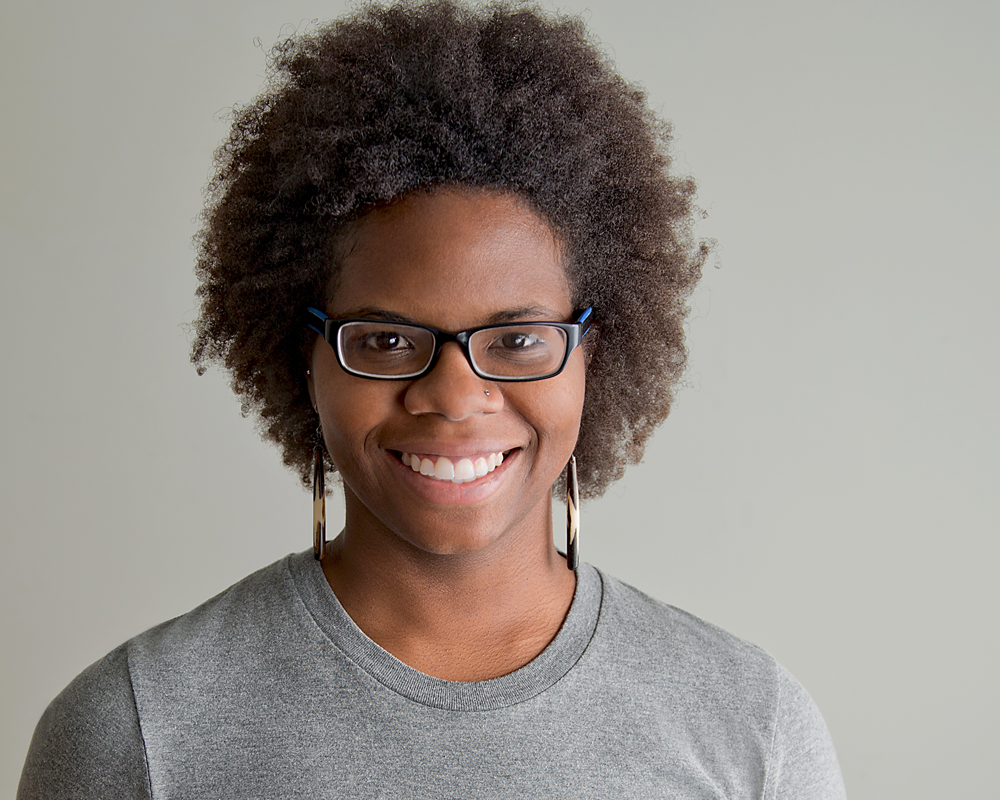The Beauty of Being Seen: Bringing Zora’s Barracoon to Life
Thanks for stopping by. Are you new to Black and Bookish? Please take a look around. Here are the books I've read and reviewed, or you can start here to get an overview of who I am and what I do. Don't forget to subscribe to get news and posts sent straight to your inbox.
Thank you to the Skirball for reaching out to me and allowing me to witness this amazing event and to the Black & Bookish community for supporting.
“I appreciate they free me.”
This post contains affiliate links.
Barracoon Connects The Larger Community
The most beautiful thing about literature is that it's not created in a vacuum. Our favorite books are timeless because they connect to us on multiple levels and for many generations. I’ve come to know Black literature in particular as a beautiful collection of stories and ideas allowing us to see ourselves no matter how separated we are from each other.
This beauty also comes mixed with the sorrows of fighting for our lives to be seen as we see them- worthy of love and acceptance simply because we exist. But sometimes, the only way for people to see us is through our pain and often, our own deaths. One of the most famous examples of this is the life of writer and anthropologist, Zora Neale Hurston.
Zora Neale Hurston
I’ve talked about her work and her life a little on this blog because we are inextricably linked. Not many people come from the small town of Eatonville- but we, she and I, have that in common. I’ve also come to see that even though I would not call myself an anthropologist, I am in the business of sharing the stories of Black people.
One of the most important stories she shared was of the man many called Cudjo Lewis, but whom she called by his African name, Kossola. Lewis was kidnapped from his home of Dahomey, Africa, and enslaved in Mobil, Alabama in 1860, 50 years after the American Slave Trade was deemed illegal. After he was emancipated, he and a group of freedmen bought land to live out their freedom days in a settlement they called Africatown.
In 1928, Hurston was sent to interview Lewis at his Africatown home. Many months of meetings led to the eventual 2018 publication of Barracoon: The Story of the Last “Black Cargo”, written by Zora Neale Hurston and edited by historian Deborah G. Plant. It took 80 years for Hurston's vision of Cudjo Lewis to be seen.
In celebration of Black History Month and the contributions of Zora Neale Hurston, the Skirball Cultural Center, in collaboration with The Los Angeles Urban League and the Ebony Repertory Theater, presented "Barracoon: A Tribute to Zora Neale Hurston”.
So why the Skirball you ask? The Skirball Cultural Center is one of my favorite places and if you have never been, it might surprise you that this was the perfect place to hold this kind of event. “Guided by the Jewish tradition of welcoming the stranger and inspired by the American democratic ideals of freedom and equality”, the Skirball invites guests to participate in all kinds of cultural shows, from spoken word and films to concerts, cooking classes, and art making. With long-running exhibits like Noah's Ark that cater to children and amazing traveling exhibits (like Jim Hensen and Ruth Bader Ginsberg), they have something for everyone to enjoy.
Michael Lawson, the President, and CEO of the Los Angles Urban League and Adele Lander Burke, the Vice President of Public Programs at Skirball, both opened with short introductions. They mentioned how the whole production came about rather quickly and why the Skirball wanted to be involved. If I'm not mistaken, this was the first collaboration between the Urban League and Skirball, citing a celebration of Blackness through the lends of literature as a good first venture.
Cudjo Lewis of Africatown
Celebrating Hurston’s work goes all the way back to my childhood and I was definitely drawn in by the chance to witness the acting talents of L. Scott Caldwell and Bill Cobbs in person. This was also my first evening event at the Skirball and I wasn't sure what to expect. The event page described who would be there and all the hands involved that I mentioned above, but not much else.
A Show to Remember
A simple set up of two chairs, two music stands, and one small table welcomed us as we found our seats in the Coten Auditorium located within Skirball's Ahmanson Hall. Able to fit 650 people in this theater configuration, the show sold out some days prior.
Shortly before the show started, images of Lewis, Africatown, and the slave trade began to circle through on the large screen behind the stage. Only one image featured Hurston which included her birth and death dates. I wish more photos had been included about her life but I understand the hesitation to make his story about her. Right before the start of the show, the photos of Lewis’ life where replace with one single photo of the front porch of a small wooden house, including two wooden rocking chairs.
If you haven’t had a chance to read Barracoon in full, do it. This project came to be from the producer/director, Wren T. Brown, founder of the Ebony Repertory Theater. He found Hurston’s mission to document the enslaved from their own perspective, and not that of the white people, central to this live reading. While most of Barracoon is set in Africa, this performance centered on Lewis' life in the Americas after emancipation and his interactions with Hurston.
I read Barracoon a year prior to hearing the text spoken out loud, but the impact of the spoken word always hits me much harder than a closed reading. As often as I would like to think that the words always jump off the page, I would be lying if I said that watching the words come to life through the acting was the same as reading. I was in awe of the whole performance. I can’t tell you how long the show was because I never checked my phone. Once it started, I was in it, sitting on that porch right with them.
L. Scott Caldwell and Antoinette Scully at the Barracoon: A Tribute to Zora Neale Hurston
L. Scott Caldwell, who everyone affectionately called “Scotty”, filled the Ahmanson Hall with her commanding presence the moment she walked on stage. The dialect she chose to represent Hurston’s narration was infectious. Wearing a fitted black dress and Cloche style hat, she embodied Hurston’s matter-of-fact attitude and witty persistence. Sometimes the script would call for her to laugh this hearty laugh, and every time it warmed my heart.
Caldwell is a talented actress from the South Side of Chicago who has graced the big and small screens, as well as the Broadway stage. I know her from her work as Rose on the series LOST, but she has been working since the late 70s. She has won multiple awards, including a Tony for her performance of Bertha Holly in August Wilson’s Joe Turner’s Come and Gone.
Her performance of Hurston was the first time I was able to fully stand in the beauty that so many people describe when reading Hurston's work. It was the strength I know to be a common trait of those born in “a city of five lakes, three croquet courts, three hundred brown skins, three hundred good swimmers, plenty guavas, two schools, and no jailhouse.”
But it was Bill Cobbs who blew the wind out of all of us. Cobbs showed us a man who had experienced so much hurt but could still be warmed by sharing a meal with a young woman he considered a friend. Cudjo Lewis was the life we knew least about and that gave Cobbs the chance to make him more in his own image.
Bill Cobbs is a someone you know you’ve seen because he has been in so much. Also an actor of tv, movies, and theater, the Cleveland, Ohio native has been working in the industry since 74.
Lewis’ dialogue isn’t always easy to understand, but I could clearly understand Bill Cobbs. He had the entire hall in tears with his portrayal of Lewis, feeling as if he were talking to all of us in that one-room Africatown cabin.
When the script called for Lewis to be angered, he would wave his hands. When it called for sorrow, he would lower his head. Cobbs introduced me to Lewis that night in a way I'd missed in my hurried reading of Barracoon.
What We Gain When Stories Are Shared
Wren T Brown and Antoinette Scully at the Barracoon: A Tribute to Zora Neale Hurston
After a standing ovation, Caldwell and Cobbs were joined by Brown and UCLA historian Wade Dean. They opened up the floor to the audience for a Q&A and shared their insights around the project and the book. They also gave more insight into the historical context of Lewis’ journey and Hurston’s place in the story.
It was also not lost on anyone the parallel of Lewis’ life that is still happening today. Brown was very intentional about including Lewis’ lament over his son’s death at the hands of a state sheriff, and then how that same sheriff wanted forgiveness after he had found God. Even then, it was the Black man’s duty to pass forgiveness and to forget.
Finally, we got a surprise first-hand account of life in Africatown from a member of the audience. Evelyn Knight was born and raised in Africatown, and knew Lewis as "Uncle Kossola". An activist in her own right, Ms. Knight talked of the people who lived in that small patch of Alabama just "like Africans".
This was one of the best events I've had the pleasure to witness.
Hurston set out to show people that Lewis deserved to be seen and then, with the help of so many talented and dedicated people, we got to see him. Interesting, Caldwell believed that Hurston "makes herself invisible” in this context but I completely disagreed. Barracoon was Hurston’s story as much as it was Lewis'- the dichotomy of the free and the freed, intersecting levels of Black pain, and the joy of bearing witness.
Barracoon is Hurston’s work in its infancy. Caldwell put it the best: "This was the groundwork". Hurston would spend the rest of her writing life showcasing Black stories.
For me, this was a way to see a complete life history of Hurston. I know where her story ends and the sadness that it holds. But it was refreshing to see a young Hurston bestowing kindness to a man who had witnessed more than any life should have. Hurston’s treatment of Lewis, bringing him treats and calling him by his birth name, was her way of seeing him. This performance at the Skirball was a way for me to finally see her.
The beauty of Black stories is being seen.
For this Black History Month, and every month after, seek out the splendor and beauty of Black lives, Black stories, and of Black people.
Which book within Black literature helped you to see or feel seen? What’s the next book on your list? Leave me a comment below!
About the Author
Black & Bookish is the brainchild of Antoinette Scully, educator and lover of all things bookish. She is on a quest to fill your bookshelves with beloved authors of the African Diaspora. When she's not hanging out online, she's living it up as the mother of two rambunctious girls and wife of a local filmmaker.





